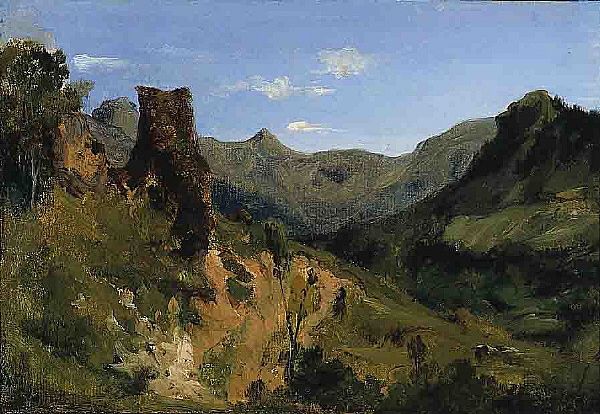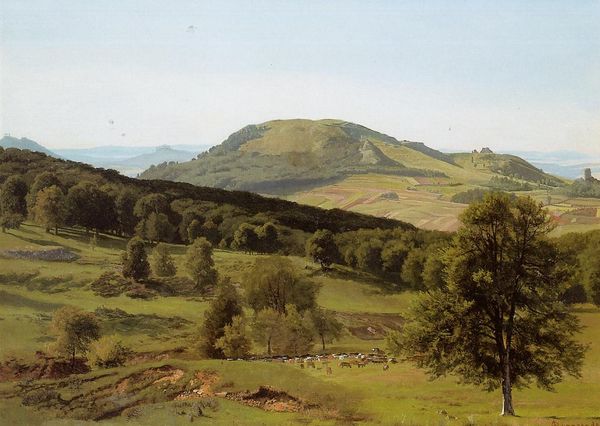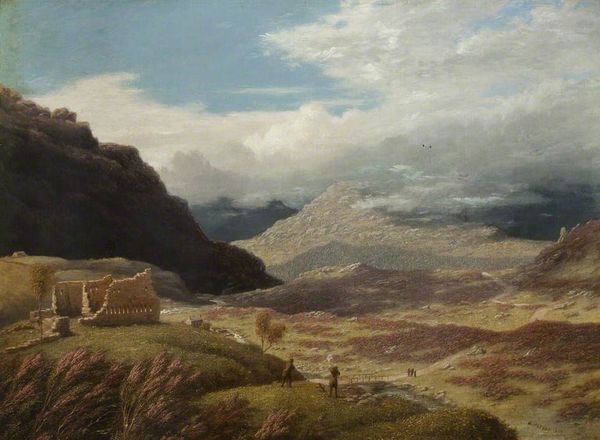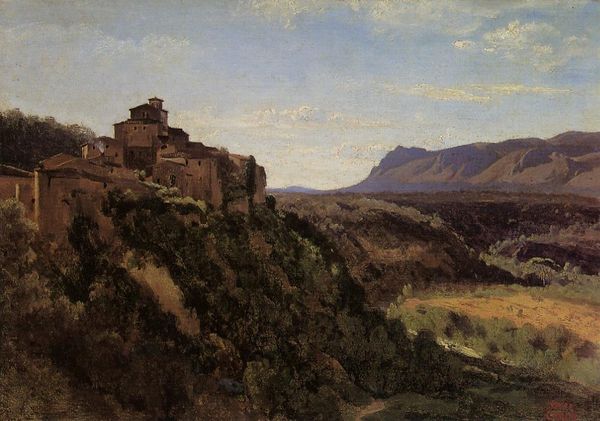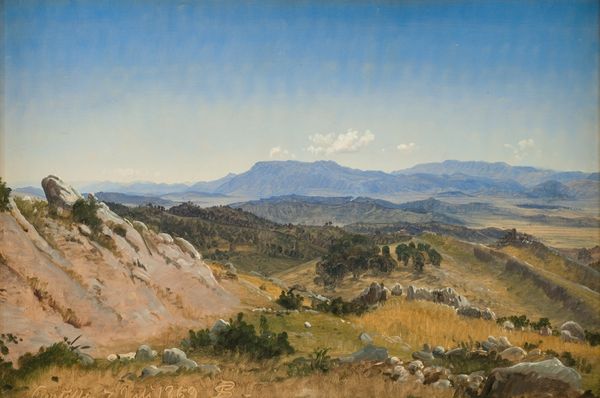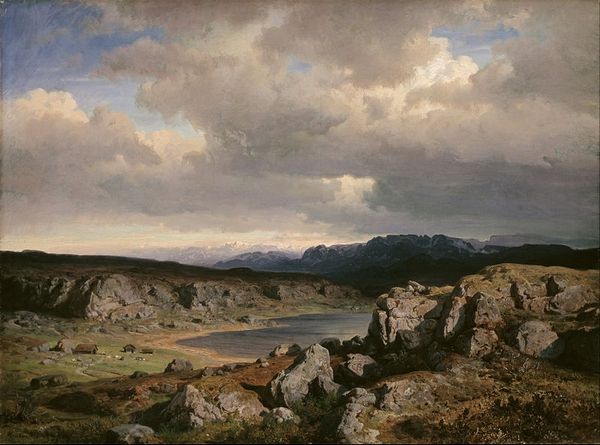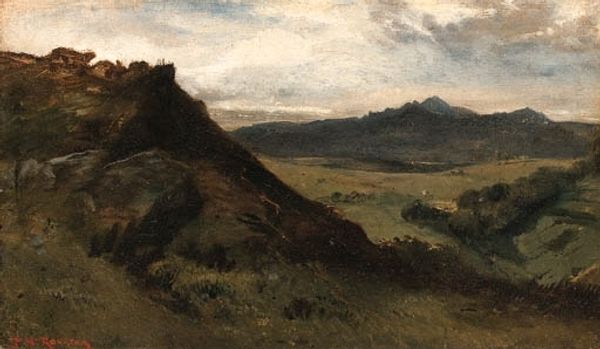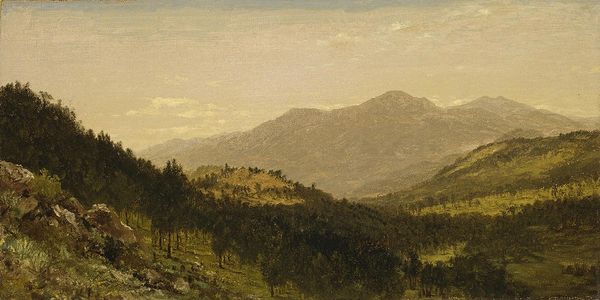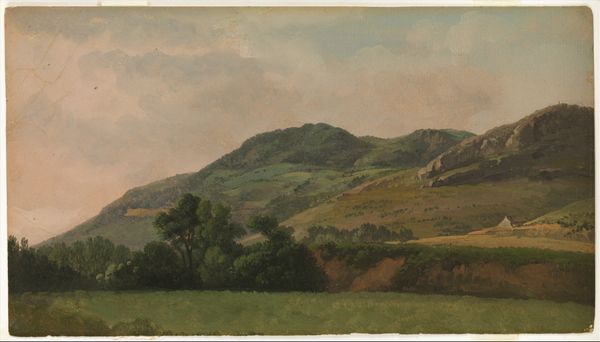
painting, plein-air, oil-paint
#
painting
#
plein-air
#
oil-paint
#
landscape
#
impressionist landscape
#
form
#
oil painting
#
romanticism
#
realism
Dimensions: 25 x 39 cm
Copyright: Public domain
Curator: Welcome. Before us hangs Théodore Rousseau's "Hilly landscape, Auvergne," painted around 1830 using oil paint. Editor: My immediate sense is one of geological monumentality. The rough, earthy textures and layered forms really draw my eye, it’s a tactile experience, even from a distance. Curator: It's interesting you say "monumentality." The imposing rock formation, which looms almost like a sentinel over the more delicate slopes, resonates with the symbolic weight often afforded to natural features, think of mountains in Romantic poetry as an example. Editor: Right, and I am interested in how Rousseau’s material handling adds to that feeling. Look at the brushstrokes; they are short, choppy. Almost geological in their buildup! I wonder, how did his plein-air method dictate the painting’s materiality, given that outdoor elements undoubtedly affected how paint could be handled and manipulated in that environment? Curator: Indeed. And perhaps, beyond the mere elements, there’s an echo of cultural memory here – ruins dot the landscape like symbols of time, echoing perhaps the fall of empires, and suggesting Nature endures regardless of humanity’s presence. The overall composition even recalls traditional depictions of the “Vanitas” tradition. Editor: Fascinating point! It definitely makes you wonder about the role of laborers or even quarrymen in the visual rhetoric. Did the material circumstances involved in the rock's possible architectural past directly factor into Rousseau's choices during painting? Perhaps they subliminally influenced what exactly became “sublime” about nature. Curator: Precisely! The "sublime" wasn’t just some abstract emotion – it was shaped by historical consciousness, by the looming specter of lost glory and the artist’s own place within the ebb and flow of time. It suggests a certain vulnerability and awe. Editor: To sum up then, there's something so intriguing in the juxtaposition of natural process and this rugged terrain being captured via industrial means of production like premixed oil paints, made commercially viable during the 19th century. Curator: I agree. By focusing on those rugged shapes and earthy colours, he’s speaking not just of a physical space, but also to the passage of civilization as if Nature were witness.
Comments
No comments
Be the first to comment and join the conversation on the ultimate creative platform.
